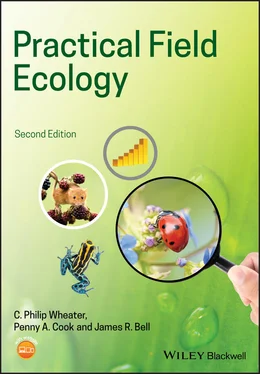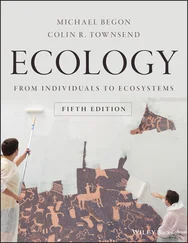1 ...6 7 8 10 11 12 ...22 Of the 18 species of bat recorded in the UK, 14 are known to roost in trees (Bat Tree Habitat Key Project 2018). Little is known about inter or intraspecific differences in the use of tree features for roosting, or the extent to which different species use trees in different habitats or during different seasons. To fill this gap in our knowledge, the BTHK project collects and analyses records of tree roosting behaviour submitted by bat researchers, ecological consultants, arboriculturalists, and bat conservation workers. One problem identified by the BTHK project is the inadequacy of current methods to sample bats roosting in trees. Endoscopes are frequently used but provide limited data, because it is very difficult to identify bats to species level using this method (let alone record sex ratios!). Furthermore, bats frequently cluster in narrow crevices, making observation of more than one or two bats almost impossible. An alternative method involves sampling bats with a handheld net as they exit the roost, but no safe, reliable, purpose‐built net existed.
How the challenge was resolved
The idea for a bat tree‐roost net originated with Henry Andrews and NHBS helped develop the design and manufacturing process. The end‐product (the BTHK Tree‐Roost Net), employs a kite‐shaped head that pivots in two places to ensure optimum positioning of the frame against the tree. The aperture of the net head can be adjusted to fit a wide range of tree sizes (marked A on the figure) and the net head pivots according to the height and location of the roost entrance (marked B on the figure). These features mean that the net can be adapted to sample roosts at a variety of heights and orientations, safely and securely. The net handle is made from aluminium, which is both strong and lightweight, and at 4 m long it can either be placed on the ground or braced against the users' body to provide a stable foundation.
The collection bag is made from soft white nylon mesh to prevent damage to the bats wings and feet and enable the user to see the bats more easily against the white background. The collection bag also has a flexible plastic attachment that extends both into and away from the aperture of the net. This allows the outside of the collection bag to form around the contours of the tree, and acts like a funnel trap to prevent bats escaping from the inside of the collection bag.
Once the net has been set up, a thermal imaging camera can be used to monitor the contents of the collection bag. To minimise disturbance, Henry Andrews recommends that two to three bats are sampled from each roost, as in most cases this will provide sufficient information about the composition of the roost.
Advice for students wanting to work with bats
Bats and their roosts receive full legal protection throughout Europe and should never be disturbed without a license to do so. If you are interested in getting involved in bat research, you could volunteer with your local Bat Conservation Trust group ( www.bats.org.uk) who will almost certainly provide opportunities for you get involved in bat surveys. You could also contact academics or ecological consultants that study bats to find out whether you could assist them with any of their work.
Creating aims, objectives, and hypotheses
Once a topic for research has been chosen, you can work out the aims of the study. These are important, since tightly defining the aims helps to focus more clearly on the work in hand and can avoid problems in implementation. ‘Woolly’ aims, such as ‘to investigate invertebrates under logs’, may be a starting point for a more focused aim, such as ‘to determine whether the number of invertebrates found under logs is related to the size of the log’. This then leads to further questions, including:
Which invertebrates are to be examined, i.e. should they be identified to species, or merely counted en masse, or allocated to ecological functional groups (e.g. predators, herbivores, etc.)?
What is a log (i.e. when is a fallen piece of wood a log rather than a twig?) and how many logs should be investigated?
How should we standardise or otherwise account for the condition and type of the logs (degree of decomposition, species of tree, etc.)?
Which measurements of size should be incorporated (e.g. length, width, surface area touching the ground, volume, depth of log in the soil, presence of other organisms such as fungi, etc.)?
Where should we sample the logs?
Which statistical method(s) should we use to analyse the data?
Once these questions have been answered, they become objectives that can be used to determine your methods. The aims and objectives lead us to the setting up of working hypotheses. For example, in our study of possible relationships between log size and the numbers of invertebrates found beneath them, we would set up a statistical hypothesis to be tested. It is common practice that the statistical hypothesis to be tested is a null hypothesis; in this context that ‘there is no relationship between log size and the number of invertebrate animals found underneath them’. Most univariate statistical tests examine the likelihood of the null hypothesis being true (see Chapter 5). A null hypothesis should meet the following criteria:
be a single, clear and testable statement – where more complex research questions are asked, you should break these hypotheses down into individual statements that are treated separately and tested in turn;
have an outcome, typically either ‘accept’ or ‘reject’ the null hypothesis;
be readily understandable to someone who is not a scientist.
You should always review the planning and implementation of each stage of your research project by using current information, either from others who have been involved in similar research, or using texts, papers in journals, or other information sources (e.g. the internet), or a combination of these. Be aware of possible biases in the information used, especially where this is obtained from websites belonging to individuals (rather than respected organisations) that have not been independently validated. Most papers in reputable journals and many textbooks have been examined by independent referees, although even these may contain factual inaccuracies and personal opinions that may not conform to current opinion. Although considered the gold‐standard of information sources, even peer‐reviewed journals are subject to bias against the publication of negative results. It is important to start your review of the literature as early as possible, since it is an ongoing process throughout your research and should inform each stage of your project. At the very least you should begin by reading the literature to establish that your proposed idea has not been already published and to define the gaps in knowledge that you will attempt to fill. It is likely that as you read one paper, you will find references to other work that may be important. Expect to read more than 100 papers in your field and to actively use a third to half of these in your thesis.
If you are new to a subject matter, you should first try and locate seminal piece(s) of work in the field or a recent review. Typically, this will be close to the top of a search list of highly cited papers and can be found by ordering a search by ‘times cited’. Take a detailed look at the seminal paper(s), the reference list, and who is citing that paper. In journal databases (e.g. Web of Knowledge), citation networks can be viewed to examine the connectedness between a seminal paper and all those papers that cite it. This is useful because it can elucidate key papers in the field and reduce the search effort dramatically. Typically, your first search should include seminal works and a collection of the most recent papers in the field (i.e. from the last few years). It might be helpful to order these by journal impact factor (if available), since parochial journals may not contain as high quality science, although sometimes smaller research papers with less apparent impact can provide valuable information in the form of species lists, new methods, and negative findings that are often not reported in more mainstream journals. An additional word of warning: highly cited papers can also be poor papers in the field since other authors might simply be referencing them to make an example of that piece of work (e.g. ‘Black and White's (2000) experimental design has been shown here and by others to be flawed’). Knowledge of the literature can assist in avoiding ‘blind alleys’ and unfruitful lines of enquiry or techniques. There are two main types of literature: primary and secondary.
Читать дальше












